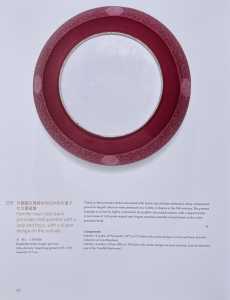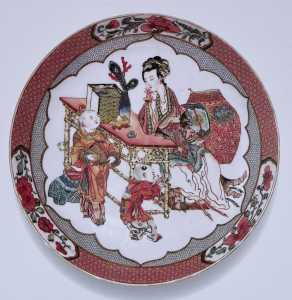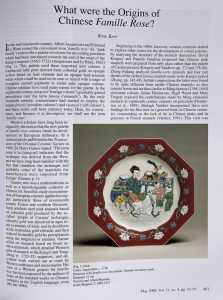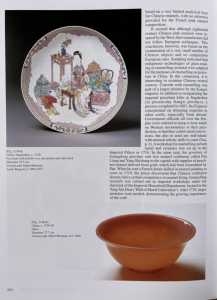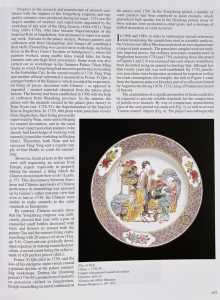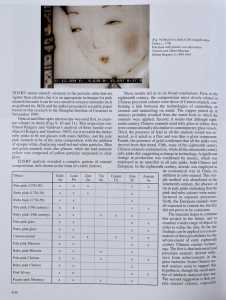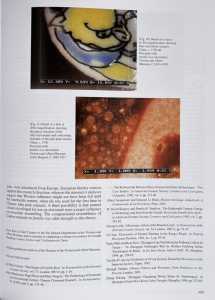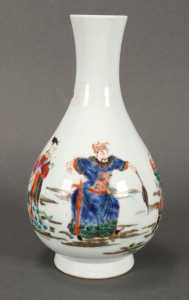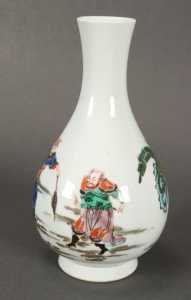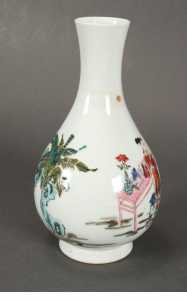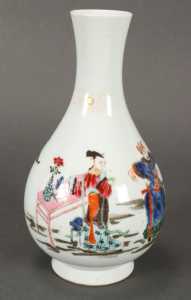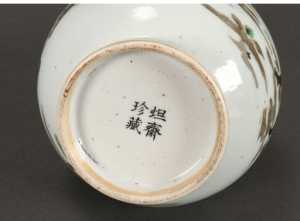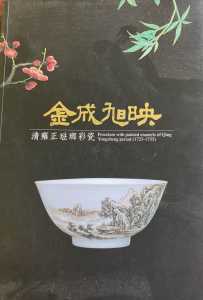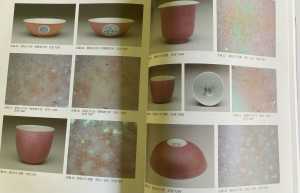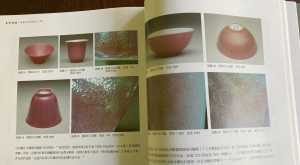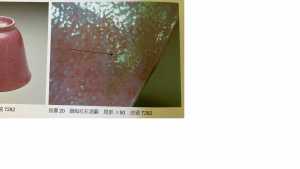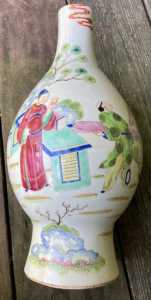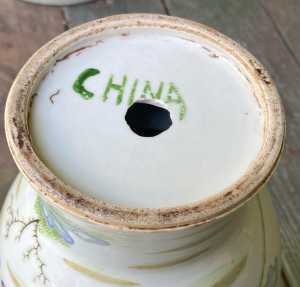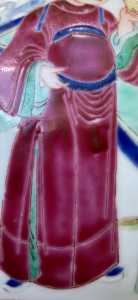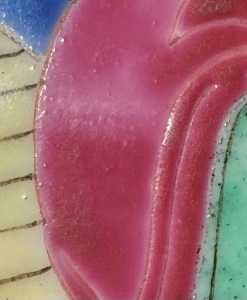The Chinese and Asian Art Forum. For Fans, Collectors and Dealers.
 Basic Rules For the BidAmount Asian Art Forum: Talk about whatever you want. You can even discuss and offer things that are for sale if they are authentic. Maximum image file size per post is 2 MB. Images of 700pxl x 700pxl are optimal if saved at a medium resolution. Be respectful of others and enjoy yourself. Click the YouTube link for a brief tutorial on using the forum. You can also EMBED Videos by cutting and pasting from You-Tube, Vimeo etc.
Basic Rules For the BidAmount Asian Art Forum: Talk about whatever you want. You can even discuss and offer things that are for sale if they are authentic. Maximum image file size per post is 2 MB. Images of 700pxl x 700pxl are optimal if saved at a medium resolution. Be respectful of others and enjoy yourself. Click the YouTube link for a brief tutorial on using the forum. You can also EMBED Videos by cutting and pasting from You-Tube, Vimeo etc.
NOTE: To post an item or add a new post, click open the category title from the FORUM LIST, and CLICK the Blue ADD TOPIC button.
@superox This has been a very thoughtful discussion...I read it late in the conversation, so I've stayed out, but you had asked some questions earlier that I think have been answered in part, but I would like to put my two cents in on....
You asked:
1.) (why) create a plate only 16.4 cm in diameter when almost with the same effort, he could do a 20.0 cm and sell it at a higher price. Answer: The artist of your plate could have realized that he could not duplicate the genuine 20.0 cm plate exactly, so a variation in size could provide a valid explination in the variation in the artistry, and therefor went with a different size. Variations in plate size at this degree is not uncommon, so nothing can be concluded from the size.
2.) a smaller piece could also mean, a more difficult space to paint. could that be the reason why they cannot get the level of accuracy. the style of painting specially on the edge (roughy compare to the accuracy of Yongzheng of hyper detail). Answer: I would not consider the size of your plate as 'small'.... small would be the size of a snuff bottle. So, no, the size of your plate should not impair accuracy of painting, but would provide an explination that some might accept to help legitimize your plate.
3.) as pointed out in this healthy post, could there have been imperial kiln imitator during those time. I remember watching those Qing Dynasty movie (Ruyi, royal place) and what the common people do is to follow what is in fashion in the royal court. Could this be one of those "wanna be ceramics" ? Let us say a Minyao version ? Answer: Even the best minyao versions of the 18th c could not produce such a close 'look a like'. The materials used for the enamels and this quality of porcelain were not available to the general public, so while the design could be copied, there would most certainly be flaws to show inferior materials.
4.) Looking at the back, there seems to be a few firing crack but it looks too clean to me. Would it be good to know if the plate "only" itself if its modern or not ? as Brian pointed out, it doese resemble the highish footrim of a 20th century plate with ladies (which is made much much more elaborately than mine...also bigger in size). The earlier 20th century paste seems dirtier and I think the remnant of Jingdazhen ceramics are based on Jiangxi company and will often be marked with the company name... Answer: I think this question suggests you are feeling the plate is more modern than Republic...and I agree. Keeping in mind that I am not holding the plate, some of the fine Republic porcelains did a superb job of copying the design of earier Qing wares, but the porcelain body itself always feels very much as most good quality Republic porcelain does...grey white color (not milk white as in the 18th c.), generally thinly potted with semi-translucent paste, and a clean foot rim, but one that has a roughness due to the nature of Republic porcelain paste.
5.) lastly, let me imagine I am the faker, can I just get a finished red plate (on a porcelain status) with white inner surface and over enamel it and paint the ladies and rebake it ? Answer: Yes and No. William pointed this out already, but the famille rose enamels are a group of metalic minerals that when fired essentially melts, then turns into color glass. Each color has its own specific temperature in which it will melts, so it must be fired in order of highest temperature to lowest, so that the prior colors stay intact (don't melt/drip). In the 18th c., the process was very difficult to achieve requiring multiple firings, which is why the best examples of Yongzheng wares are so valuable. Now days, most of the color enamels can be created to have similar firing temperatures, so one firing can produce a complete piece.
I do not know what the firing temperature for the ruby ground is as compared to the other enamels, but an original ruby ground and a later 'clobbering' of a famille rose scene on the inner plate is possible in theory, but I think highly unlikely without some sort of imperfections created in the ruby glaze.
My final thought is to say that I am really pleased to see how everyone has paid so much attention to the artistry of the piece as the determinant of authenticity. I really think this is the method that Peter recommends, and as you all know, I do, too.
So, it is with great irony that I want to say that the photos that have been posted so far are not good enough to determine authenticty - NOT because you can't compare the overall decor, but in this case, we can not see the nature of the enamels (texture, color, imperfections).
The design overall has flaws that suggest that it is not truely Yongzheng, but it is still pretty good...so maybe just a bad day at the kiln, right? (probably not).
But, if Al could post a real close up of the pink/red enamels (let's say of the robe and border) where we can see the little bubbles and texture, we can resolve the matter of authenticty fairly quickly (I think).
Famille rose colors were newly invented, and despite the artistic talents of the Yongzheng artists, they still were mastering mixing the chemicals to create these 'new' colors. So, the enamels didn't really fire all that well, creating bumpy & bubbley textures with colors that were not usually uniform when you look at them up close.
Later examples are much smoother in texture and uniform in color.
Without the close up photos, and based upon just the artistry, I agree with Brian, this appears to be a modern plate. However, that's a big risk to assume this conclusion as fact without a closer look at the enamels.
Tim
@superox -
Hi Al -
Not really my area, but you may find the attached images and article interesting comparisons :-
1/2:- No 209, exhibited ‘China without Dragon’s’, Oriental Ceramics Society, London 2016 …
3-7:- Paper by Rose Kerr, Orientations, Voll 31, May 2000 …
Stuart
Hi Tim.
Thank you for your reply. I appreciate the effort.
1.) do you have a photo or a sample of how a "bumpy and textured" colour look like ?
2.) If the answer to the question 1 is a yes, then it is a Yongzheng piece (minyao)
3.) would this type "bumpy and textured" of enamel behavior still exist during the Late Qing/Republic or have they smooth them out by that time.
4.) if the answer in 3 is a yes, (Later post Yongzheng), then the paste itself will not be of the period as most LateQing paste are greyish white paste while this is a clear white paste.
5.) Peter mentioned that there is a legitimate wear on the piece, could it then be possible it could be something that was made when the Jiangxi kiln was revived where the white colour paste came back ? Would you say this would be at most a 1950-1960 copy (pre-cultural revolution) ?
Thanks and looking forward to your reply.
Hey,
I agree with Tim, some close ups of the enamels would be useful. Something I have noticed on export wares especially Yongzheng periods, is the separation of certain enamels as they fired, maybe impurities burning out, and miss mixed components not leveling quite right. A good example of this is the Yongzheng horses plate , which Brian bought from me a while back, there was quite a debate if the quality was up to Yongzheng standards. It is often times difficult to assess this as most museums and books, and high end dealers, only select the best, so you are essentially viewing the period with blinders on. I showed that plate to a few very prominent dealers, who had sold better quality examples in the past, and they all assured me that it was just not the same tier( theirs were around $10k, mine certainly not), but was nevertheless of the period. There were a few of the enamels that were slightly miss-fired, if I recall there was a green that showed this flakey/bubbly separation... I do not have pics on my computer anymore, at least not closeups, perhaps if Brian still has it, he could show some closeups.
As for your plate, the purple/mauve (whose to say someone didn't bleed brown into a purple, or mess up some other way) doesn't convince me that it is not Yongzheng, there are too many variations of this design, and of the quality of these, and I see more going for it than not. That said, a bunch of closeups in bright sun, of enamels and foot, and the texture of the ruby back would help certainly.
but with out some one handling it, who has handled a bunch of these export plates(I am not saying I would be a good example of that, though I have handled quite a few... there are so many things I have never seen), find someone locally hopefully there is a top dealer near you and show it to them and get an opinion. These early famille rose enamels are often tricky, as many are set in their ways that they have to be one exact way(something I think modern fakers use to their advantage), but in reality there was no "one way" that these were made or fired, and as I have further delved into this era of export ceramics, the differences are quite noticeable, and should be kept in mind while viewing a multitude of these.
Also to note the positive, the majority of the enamels are very much in line with what I expect, the border decoration again totally fine for this period, the sloppiness in the layout could be just a rushed decorator, the gilding looks okay, and the foot too( with out very good closeups that is), and honestly the overall composition of the design, looks perfectly fine to me.
That said, more pictures are needed to make an educated guess, and handling is need to confirm.
Below are a bunch of examples and some purples that I just found off hand at the BM... If you dig(V&A, Peabody Essex, Europeanna.com) you are likely to find a million(I am exaggerating obviously) different versions of this decorated in a variety of qualities, and very few are going to be in this top top quality range that I suspect the majority of people assume is the golden standard.
Jeremy
I apologize if I included something others have already sited...
Similar patterns:
https://www.britishmuseum.org/collection/object/A_1936-0413-35
https://www.britishmuseum.org/collection/object/A_Franks-904
https://www.britishmuseum.org/collection/object/A_Franks-699-
https://www.britishmuseum.org/collection/object/A_Franks-438
Some purples:
https://www.britishmuseum.org/collection/object/A_1953-1015-6
https://www.britishmuseum.org/collection/object/A_Franks-872
https://www.britishmuseum.org/collection/object/A_Franks-418
Hi Jeremy,
Thank you so much for this... once I receive it I will take a photo and send to the forum group.
these photos (museum quality) are like something of an 8K high resolution art piece compare to my which is 720p (video resolution) the most (576 i would be super sloppy 😆 )
It will take take for me to absorb all these information as I am coming from collecting Song ceramcis (Qingbai) to these myriad of colours. It is another level of appreciating as you can see the human flaws in imperfection in it.
Are there good books on enamel ? I heard there is a Nigel Wood book that talked about Glaze... could that be good in my journey of enamel world ?
All comments from everyone is truly appreciated... Now i need to get some sleep its almost 2 am here in sydney...
Al
Beautiful Mark!
the colours are vibrant! something you can sit down put it on a slow turn table and really enjoy it..
also a nice almost pearly white glaze...
What mark is it (no pun intended! 😀 )
The mark is a rare one.
Tan zhai Zhen cang'
Translation is 'precious collection of the calm studio'.
We reside in the same country. I am in Melbourne.
Mark
@jbeer2121 I find it hard to believe that the border design would have been treated this casually in comparison to the more detailed examples given the way the other aspects were done to emulate the best period examples. If anyone has located a period example with this loosely done border I would like to take a look at it to compare. At any rate, I agree that we need to see good pictures in natural light that can be enlarged, etc., before we can have a better sense of what this plate is.
it's amazing when the real thing reveals itself when it's compared to a less quality copy....
no doubt
@johnshoe Hey John,
I was more commenting on the enamels and interpretations of the design, and the wide variety in those, and I suppose I am wrong about this particular plate, I agree the border should not be sloppy... I also doubt that this would be republic period, I feel that this is often used as a catchall for 20th century "copies", to be honest for me this plate is either the period or fake.
I looked further into ruby backs after mentioning this dish to the forum's other John, and it seems that these ruby backs are always decorated to the highest standards. I have only ever handled four in person, with solid provenance in a major collection, and I will admit that they were perfect in every way.
I still stand by the possibility of odd colors and design features in this period, I think that by Qianlong though if you see funky colors and errors it would be a bad sign.
I would like very much to see the closeups though...
Jeremy
Just my input I own a lot of Chinese and Japanese porcelain almost everything from the Kangxi to the Qainlong period the boarders are drawn very clearly and persistent. I also went through all of my books. We are not talking about a crooked boarded we are talking about missing lines uneven rows S lines missing sections. This happens when a artist is unfamiliar with the mapping of a design. An artist that is clearly copying a pattern but doesn’t have the experience to transition the pattern correctly. To me this is a smoking gun this is not a quality issue this is an experience issue.
@superox ,
Looks like Stuart posted a great article that covers the subject of your plate very completely, and others have provided some great references, too. But, I'll do my best to answer your questions:
1.) do you have a photo or a sample of how a "bumpy and textured" colour look like ? Yes. The reference book below is of Imperial wares of the Yongzheng. They have some great close up photos of the red enamel, but my photos of the book images might not be very clear. Take a look....
You should be able to see under high magnification a collage of clear and opaque coloration, along with imperfections since the metal compound was not as homogeneous as more modern enamels.
2.) If the answer to the question 1 is a yes, then it is a Yongzheng piece (minyao) I am not sure I understand the question. Are you saying your plate has this manner of red glaze? That's excellent! Congrats!
3.) would this type "bumpy and textured" of enamel behavior still exist during the Late Qing/Republic or have they smooth them out by that time. No, not that I am aware of. Here is an example of a vase I own from the late Qing in the Yongzheng style - I bought it because it is a very good study piece.
Here's the vase with the CHINA mark...pretty typical late Qing style.
If you open the close up in a seperate browser, you should be able to zoom in. Very few bubles and imperfections...very uniform color and perfectly smooth texture....not at all like the Yongzheng period red.
4.) if the answer in 3 is a yes, (Later post Yongzheng), then the paste itself will not be of the period as most LateQing paste are greyish white paste while this is a clear white paste. I am not sure if this is a question or a statement. When you get your plate, place it on a bright white sheet of paper. A post 18th c. plate will still be white, but you should see a slight gray tint... it's very faint. Genuine Yongzheng porcelain is like milk white, especially in bright light where it almost glows white...it is very distinct.
5.) Peter mentioned that there is a legitimate wear on the piece, could it then be possible it could be something that was made when the Jiangxi kiln was revived where the white colour paste came back ? Would you say this would be at most a 1950-1960 copy (pre-cultural revolution) ? What do you mean, 'legitimate wear'? I would need to see photos, but the 'wear' of a piece is perhaps the last assessment I would use to authenticate...too easy to fake, and many pieces held in collection for long periods of time are completely without wear.
I look forward to seeing more photos when the plate arrives, and I am really hoping the plate is genuine!
Thanks for visiting "The BidAmount Asian Art Forum | Chinese Art"
If you sell on eBay, or have a shop feel free to post images and descriptions and links.
Check back often for discussion about the latest news in the Chinese art and antique world. Also find out about the latest Asian art auctions at Sotheby's, Christie's, Bonhams and Tajans.
Auction results for: fine porcelain, ceramics, bronze, jade, textiles and scholar's objects. As well as Japanese, Thai, Vietnamese and other Asian cultures.
Thank you,
Peter Combs
Topics and categories on The BidAmount Asian Art Forum | Chinese Art
Kangxi vases, Kangxi dishes and chargers, Kangxi ritual pieces, Kangxi scholar's objects, Qianlong famille rose, Qianlong enamels, Qianlong period paintings, Qianlong Emporer's court, Fine porcelain of the Yongzheng period. Chinese imperial art, Ming porcelain including Jiajing, Wanli, Xuande, Chenghua as well as Ming jades and bronzes.
The BidAmount Asian Art Forum | Chinese Art
A free Asian art discussion board and Asian art message board for dealers and collectors of art and antiques from China, Japan, Korea, Thailand, Cambodia, Vietnam and the rest of Asia. Linked to all of the BidAmount Asian art reference areas, with videos from plcombs Asian Art and Bidamount on YouTube. Sign up also for the weekly BidAmount newsletter and catalogs of active eBay listing of Chinese porcelain, bronze, jades, robes, and paintings.
The art of calligraphy - and for the ancient Chinese it certainly was an art - aimed to demonstrate superior control and skill using brush and ink. Calligraphy established itself as one of the major Chinese art forms during the Han dynasty (206 BCE - 220 CE), and for two millennia after, all educated men were expected to be proficient at it.
The Museum’s collections of Asian art span nearly five millennia and encompass the cultures of China, the Himalayas, India, Japan, Korea, and Southeast Asia. In 2007, the Museum launched an initiative to create dedicated galleries for the collection, beginning with a gallery for the arts of Korea ...
Chinese art is full of symbolism, in that artists typically seek to depict some aspect of a totality of which they are intuitively aware.
China Online Museum is the finest online museum of Chinese art. It features Chinese calligraphy, painting, ceramics, bronzes, carving, and other artworks.
Chinese Ceramics & Works of Art. Overview Upcoming auctions Contacts Auction results ... Christie’s sales of Chinese ceramics and works of art showcase centuries of Chinese history. Held throughout the year in London, New York, Paris and Hong Kong, they attract a wide audience of collectors and connoisseurs vying for pieces as diverse as ...
Explore Asian Art Week. Contact the Specialist Department. Chinese Paintings ... Senior Specialist, Head of Sale. [email protected]. Tel:+1 212 641 5760. Bid in-person or online for the upcoming auction:Fine Chinese Paintings on 10 September 2019 at New York. Bid in-person or online for the upcoming auction:Fine Chinese Paintings on 10 ...
Discover an abundance of must-see art from all corners of a vast continent at Christie’s NY Asian Art Week. From contemporary classical and Chinese paintings to works with exemplary provenance from the Art Institute of Chicago, our Rockefeller Paza galleries will be full of ancient treasures and contemporary masterworks in a salute to the vibrant arts of Asia.
Sold to benefit The Art Institute of Chicago’s Asian Art Acquisition Fund, the sale features 84 lots with a focus on Ming and Qing porcelains, and offers a rare insight into the taste for collecting Chinese ceramics and works of art in the Midwest from the end of the 19th century through the 1980s. Highlights include two Wanli wucai garlic-head vases, a Qianlong mark and period, blue and ...
Specialist, Chinese Paintings, Christie's London Dr Malcolm McNeill is a Specialist in Chinese Paintings at Christie’s, based in London. He previously worked as an assistant curator of the Chinese collections and the Victoria and Albert Museum in London, as a researcher at the British Museum, and as a translator and tour guide at the National Palace Museum in Taipei.
The Christie's Education 2020 Conference: The Chinese Art Market 18 Jun 2019 Christie’s Education is delighted to announce our first international academic conference in Asia which will take place in Hong Kong from 26-27 November 2020 at the Hong Kong Convention and Exhibition Centre and will run in parallel with Christie’s Hong Kong Autumn Auctions.
The summer Chinese Art sale in Hong Kong will feature works of art from several private collections, including Qing porcelains and textile from the collection of the legendary Chinese art dealer A. W. Bahr (1877–1959), fine gilt bronze Buddhist sculptures from an old Hong Kong collection, an East Asian collection of Qing dynasty wine cups and jades, and a Japanese collection of Song ceramics ...
Sotheby's Chinese Works of Art Department holds two auctions each year in London, New York, Hong Kong and Paris.
Chinese Art - View Auction details, bid, buy and collect the various artworks at Sothebys Art Auction House.
With more than 340 Chinese works of art dating from the Neolithic to the Republic periods, highlights of this sale include a selection of Qing Imperial monochromes from the collection of Arnold and Blema Steinberg, early ceramics from the Art Institute of Chicago and Chinese porcelain and works of art from the collection of Henry Arnhold.
Results: Sotheby's Asia Week achieved $52.4 million in six strong auctions, exceeding pre-sale estimates. With 76.5% of lots sold and 60.3% of lots surpassing high estimates, the Asian art sales at Sotheby's indicate continued collector interest in the finest works of art from China, India and and the Himalayas.
Today's sale of Important Chinese Art will proceed as planned with sessions at 10 AM and 2 PM EDT. Sotheby's will be monitoring the weather conditions throughout the day and will be available to coordinate alternative bidding options should conditions make it difficult for clients to attend the auction in person.
Bonhams Chinese Art department is renowned for offering the finest works of art representing the richness and breadth of China's artistic heritage, particularly Imperial porcelain, white and spinach green jades, cloisonné and Buddhist art. Specialised international auctions are held globally, including London, Hong Kong and San Francisco.
Bonhams : Chinese Works of Art We use cookies to remember choices you make on functionality and personal features to enhance your experience to our site. By continuing to use our site you consent to the use of cookies. Please refer to our privacy and cookie policies for more information.
Bonhams Fine Art Auctioneers & Valuers: auctioneers of art, pictures, collectables and motor cars. We use cookies to remember choices you make on functionality and personal features to enhance your experience to our site. By continuing to use our site you consent to the use of cookies. ... Chinese Art (US) General enquiries
Bonhams : Fine Chinese Art We use cookies to remember choices you make on functionality and personal features to enhance your experience to our site. By continuing to use our site you consent to the use of cookies. Please refer to our privacy and cookie policies for more information.
Bonhams Fine Art Auctioneers & Valuers: auctioneers of art, pictures, collectables and motor cars Bonhams : Asian Art We use cookies to remember choices you make on functionality and personal features to enhance your experience to our site.
Bonhams are international auctioneers of fine Chinese and Japanese art. We specialise in rare Imperial and Export Chinese ceramics and works of art, as well as Japanese ceramics, fine and decorative works of art from the Neolithic Period to the 20th century. View on map
Bonhams Fine Art Auctioneers & Valuers: auctioneers of art, pictures, collectables and motor cars. We use cookies to remember choices you make on functionality and personal features to enhance your experience to our site. By continuing to use our site you consent to the use of cookies. ... Asian Art Bonhams. Work. 22 Queen St.
